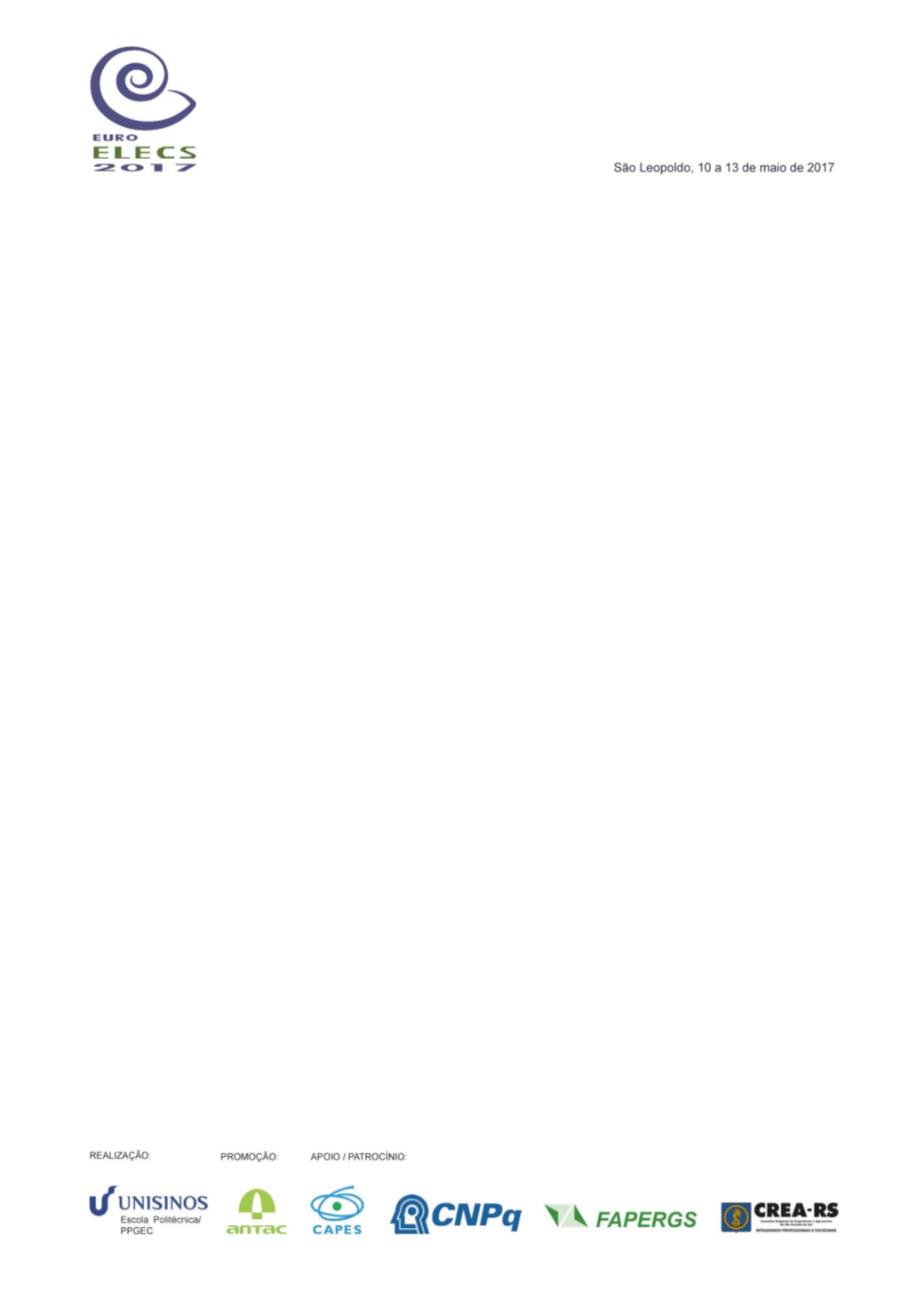

196
CHEN, C.
et al.
LCA allocation procedure used as an incitative method for waste recycling: An
application to mineral additions in concrete. Res, Cons. Rec., n. 54, p. 1231–1240, 2010.
COELHO, F. Z. Avaliação do ciclo de vida cradle-to-gate de traços de concretos autoadensáveis
com incorporação de resíduos e subprodutos industriais. Vitória, 174p., 2016. Dissertação
(Mestrado) - Universidade Federal do Espírito Santo.
CORTI, A.; LOMBARDI, L. End life tyres: Alternative final disposal processes compared by LCA.
Energy, n.29, p. 2089-2108, 2004.
FERALDI, R.
et al.
Comparative LCA of treatment options for US scrap tires: material recycling and
tire-derived fuel combustion. Int. Journal of Life Cycle Assessment. n. 18, p. 613-625, 2013.
HABERT, G.; D’ESPINOSE DE LACAILLERIE, J. B.; ROUSSEL, N. An environmental evaluation
of geopolymer based concrete production: reviewing current research trends. Journal of Cleaner
Production, n. 19, p. 1229-1238, 2011.
HEATH, A.; PAINE, K.; MCMANUS, M. Minimising the global warming potential of clay based
geopolymers. Journal of Cleaner Production. n. 78, p. 75-83, 2014.
ISMAIL, M. K.; HASSAN, A. A. A. Use of metakaolin on enhancing the mechanical properties of
self-consolidating concrete containing high percentages of crumb rubber. Journal of Cleaner
Production, n. 125, p. 282-295, 2016.
ISO (International Organization for Standardization) 2014. Environmental management for
concrete and concrete structures – Part 2: System boundary and inventory data. ISO 13315-2.
ISO (International Organization for Standardization) 2006a. Environmental management - life cycle
assessment - principles and framework. ISO 14040
ISO (International Organization for Standardization) 2006b. Environmental management - life cycle
assessment - requirements and guidelines. ISO 14044
JOLLIET, O.
et al.
IMPACT 2002+: A New Life Cycle Impact Assessment Methodology.
International Journal of LCA, v. 8, n. 6, p. 324-330, 2003.
MORENO RUIZ, E.
et al
. Documentation of changes implemented in ecoinvent database 3.2.
Ecoinvent Centre, Zürich, Switzerland. 2015
SIDDIQUE, R.; NAIK, T.R. Properties of concrete containing scrap-tire rubber – an overview.
Waste Management. n. 24, p. 563-569, 2004.
SILVA, F. M. et al. Investigation on the properties of concrete tactile paving blocks made with
recycled tire rubber. Construction and Building Materials, n. 91, p 71-79, 2015.
SIMAPRO (2016) Faculty, Version 8.2.0.0. Developed by PRéConsultants.
THOMAS, B. S.; GUPTA, R. C. A comprehensive review on the applications of waste tire rubber
in cement concrete. Renewable and Sustainable Energy Reviews, n. 54, p.1323-1333, 2016.
VIEIRA, D. R.; CALMON, J. L.; COELHO, F. Z. Life cycle assessment (LCA) applied to the
manufacturing of common and ecological concrete: A review. Construction and Building Materials,
n. 124, p. 656–666, 2016.


















